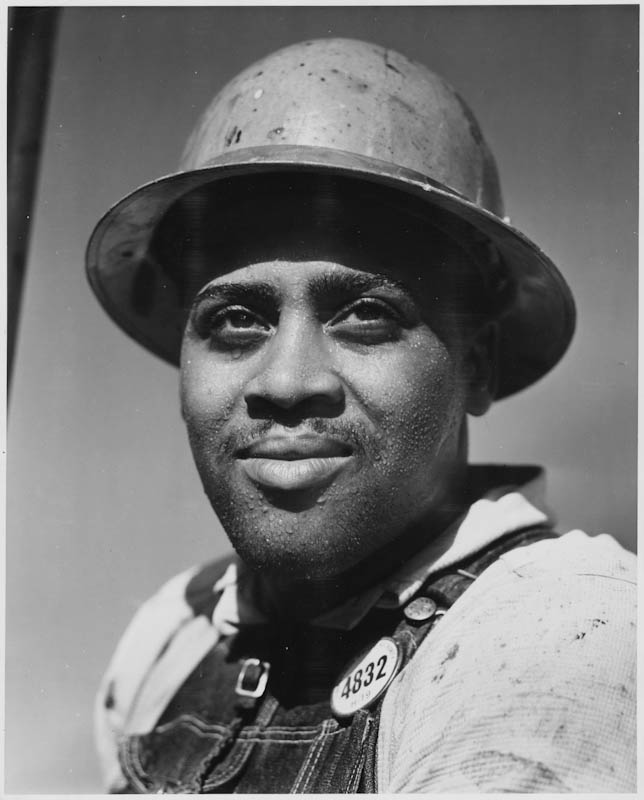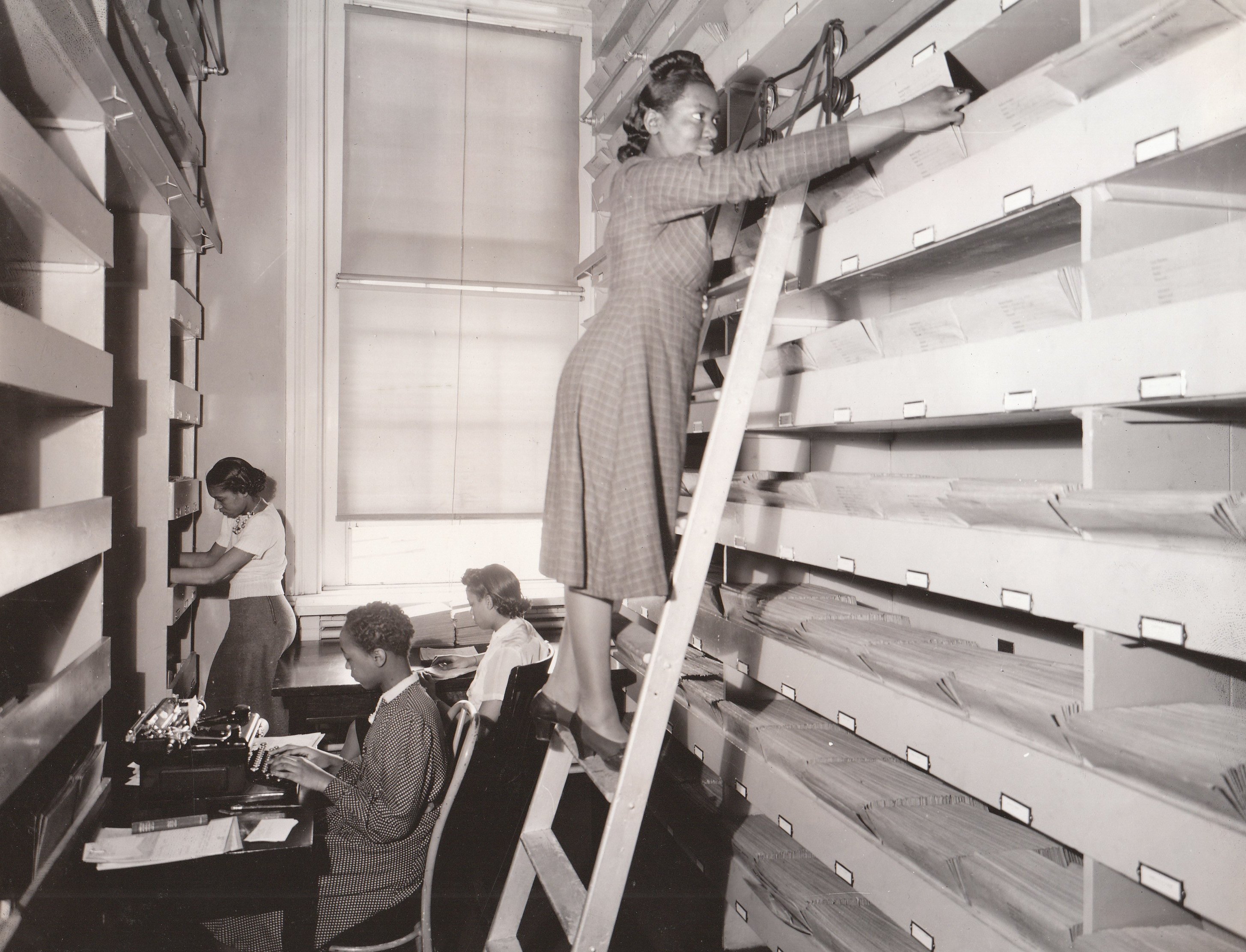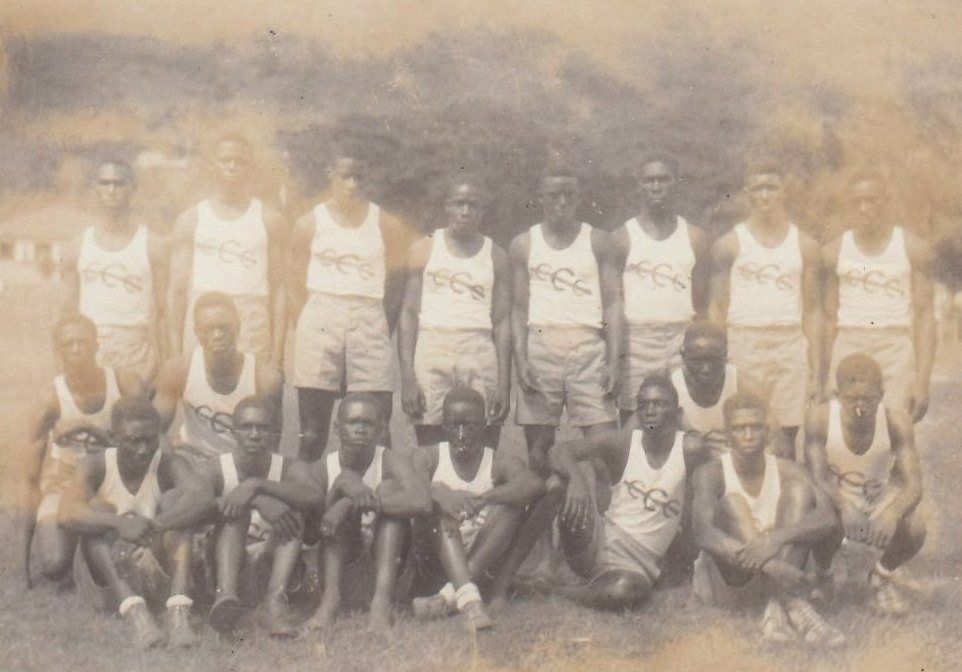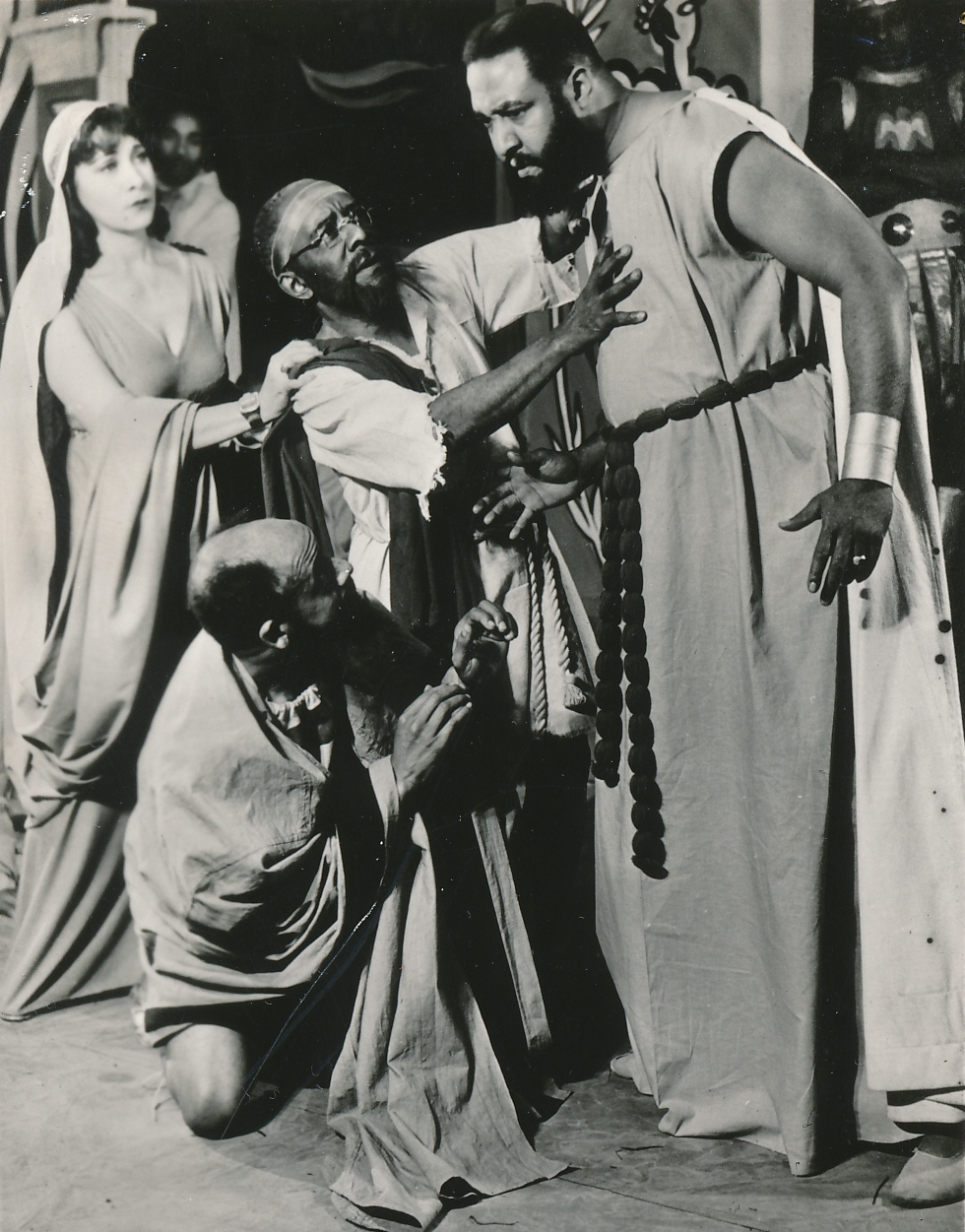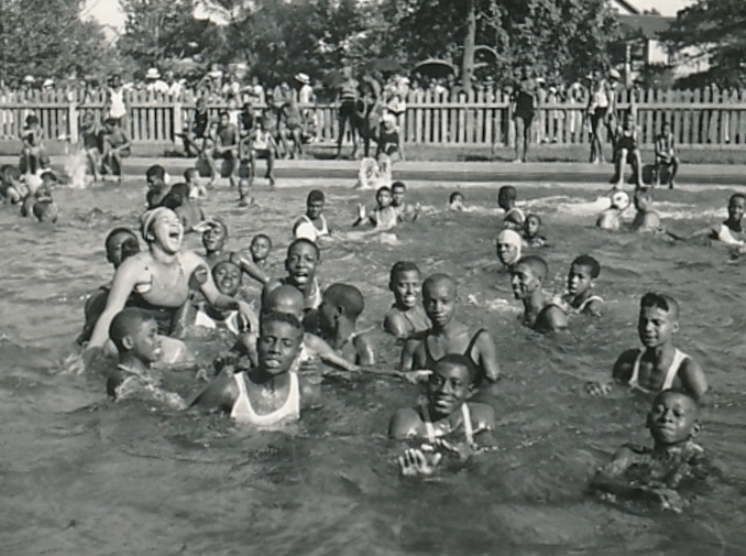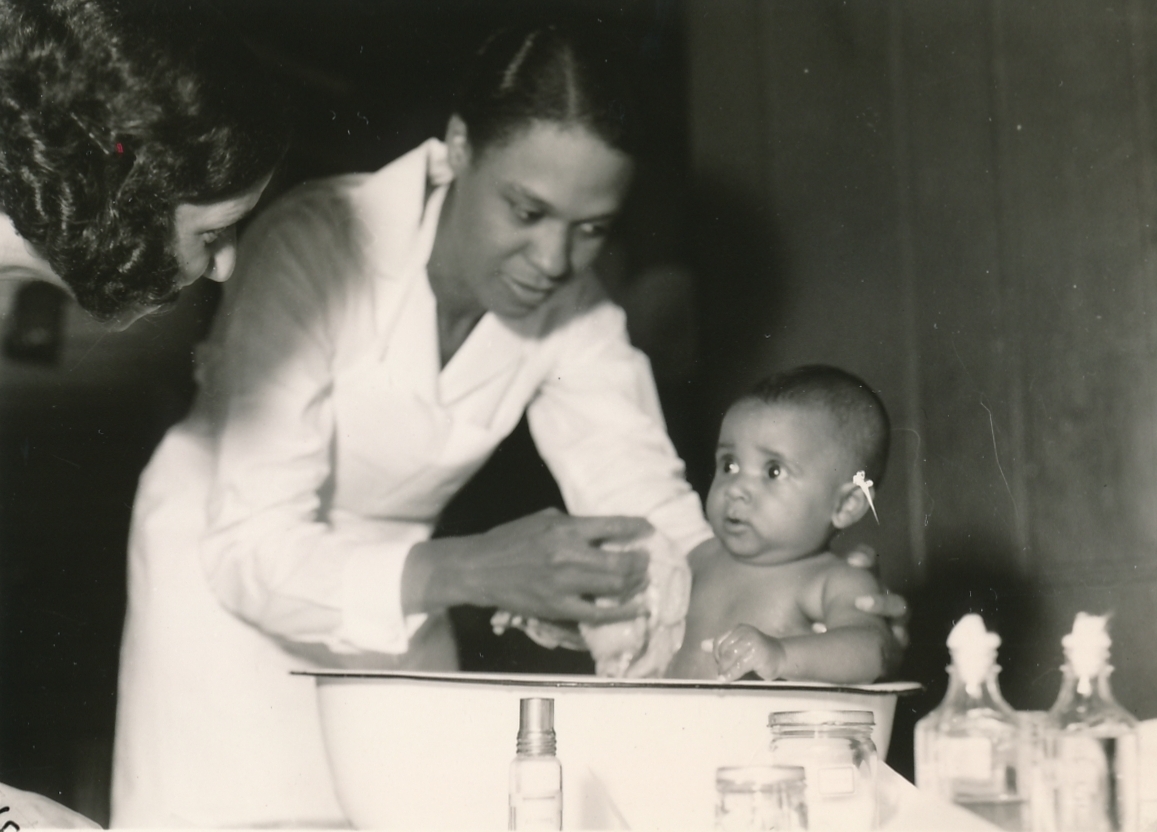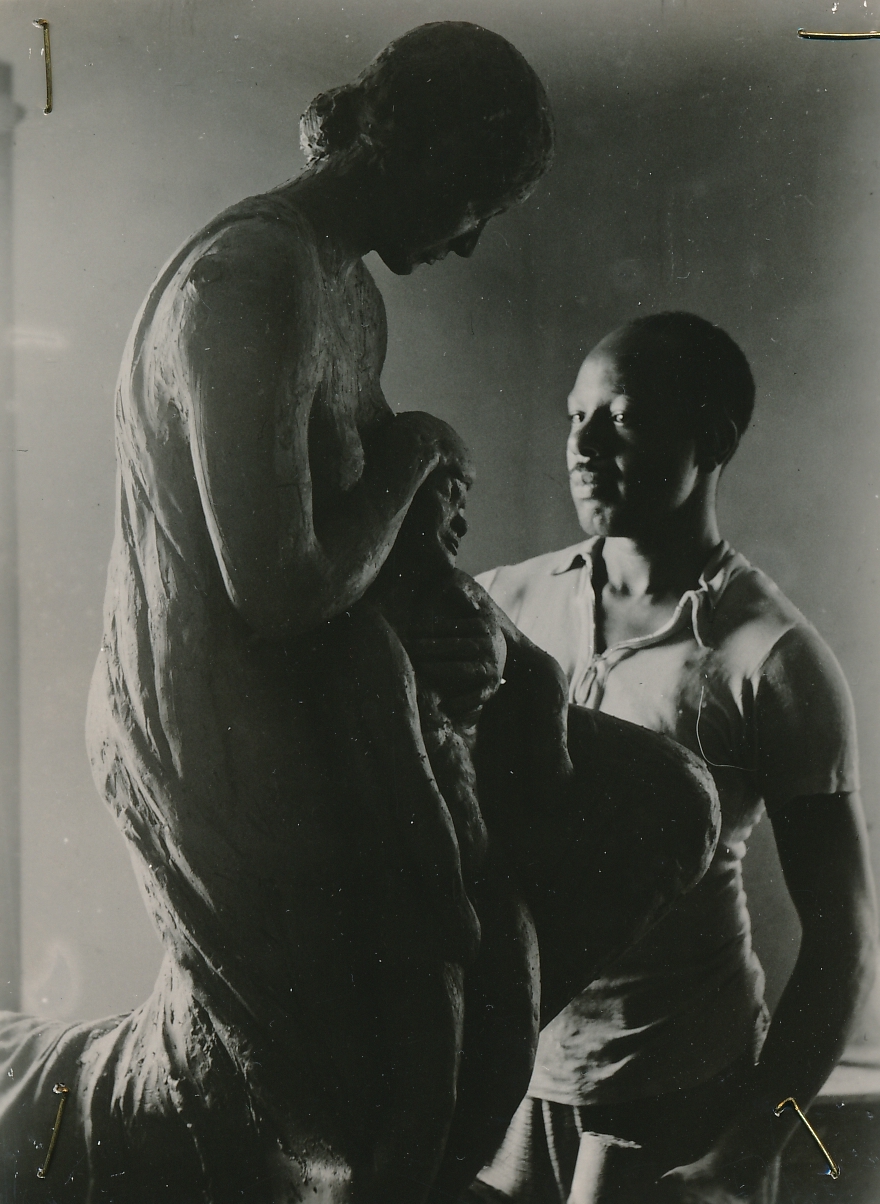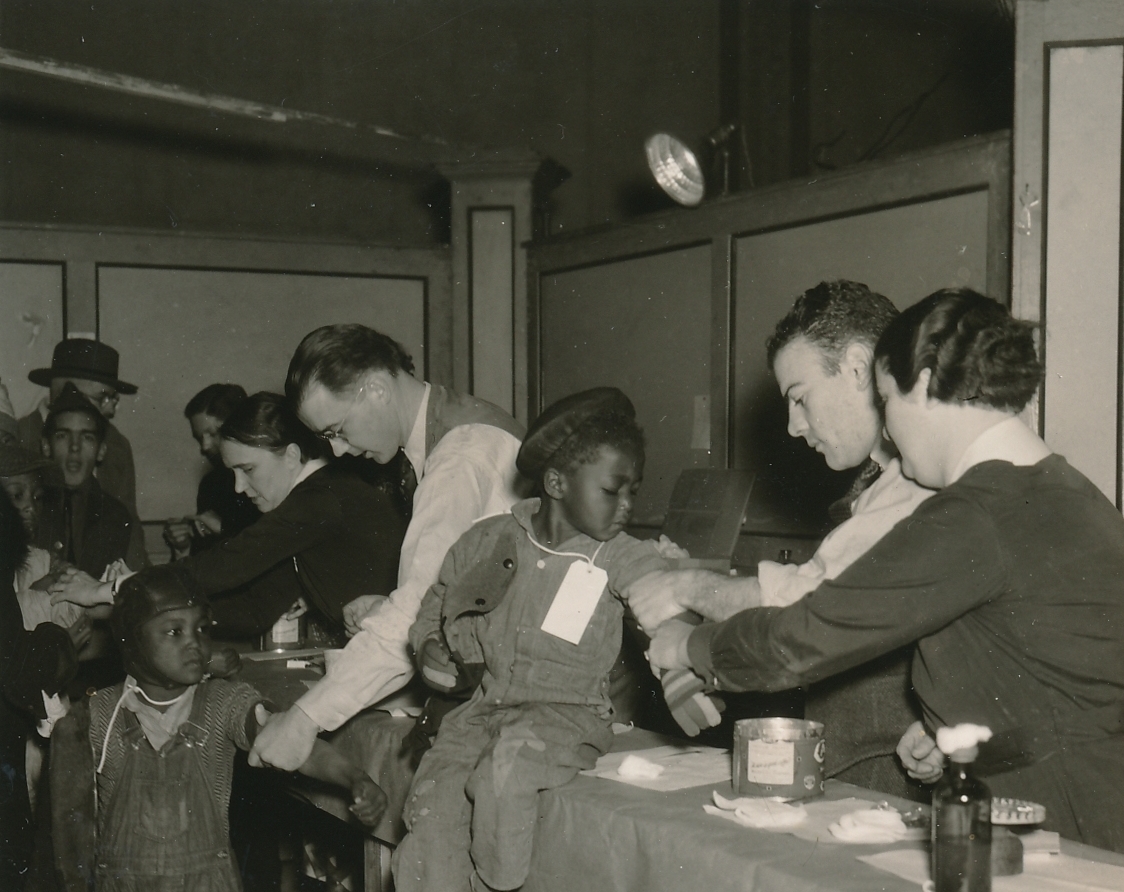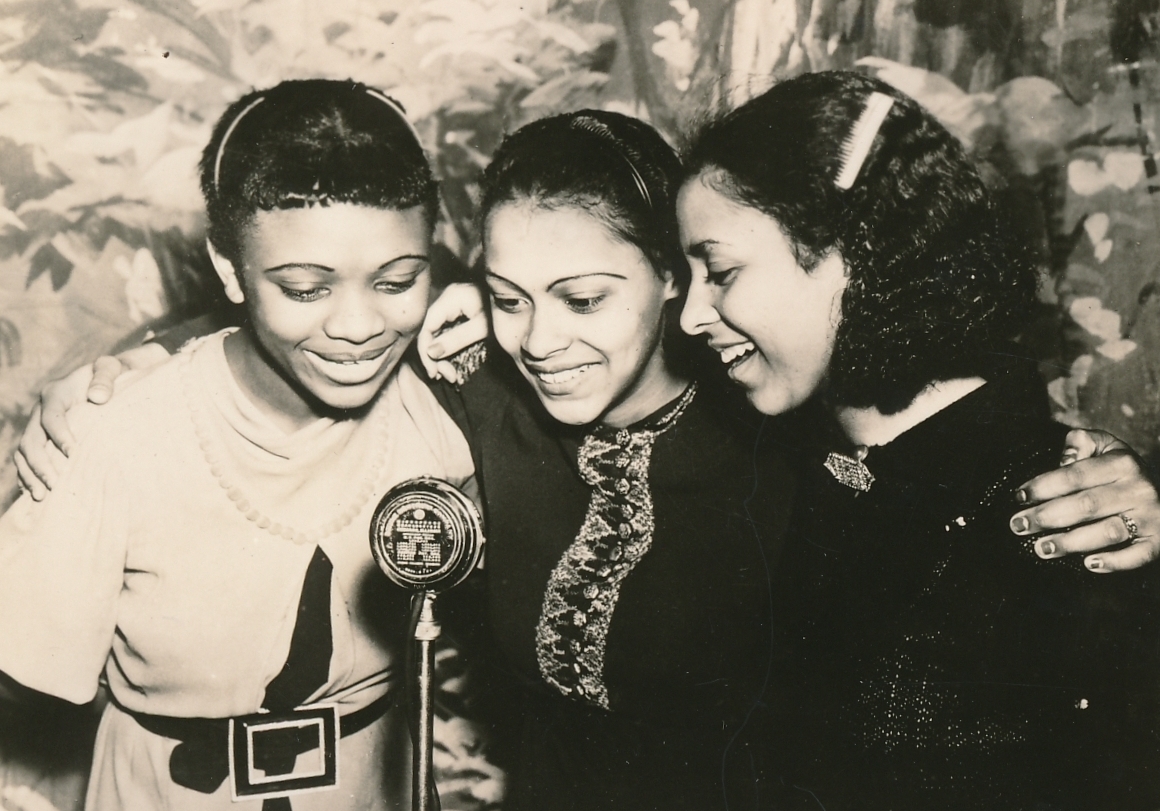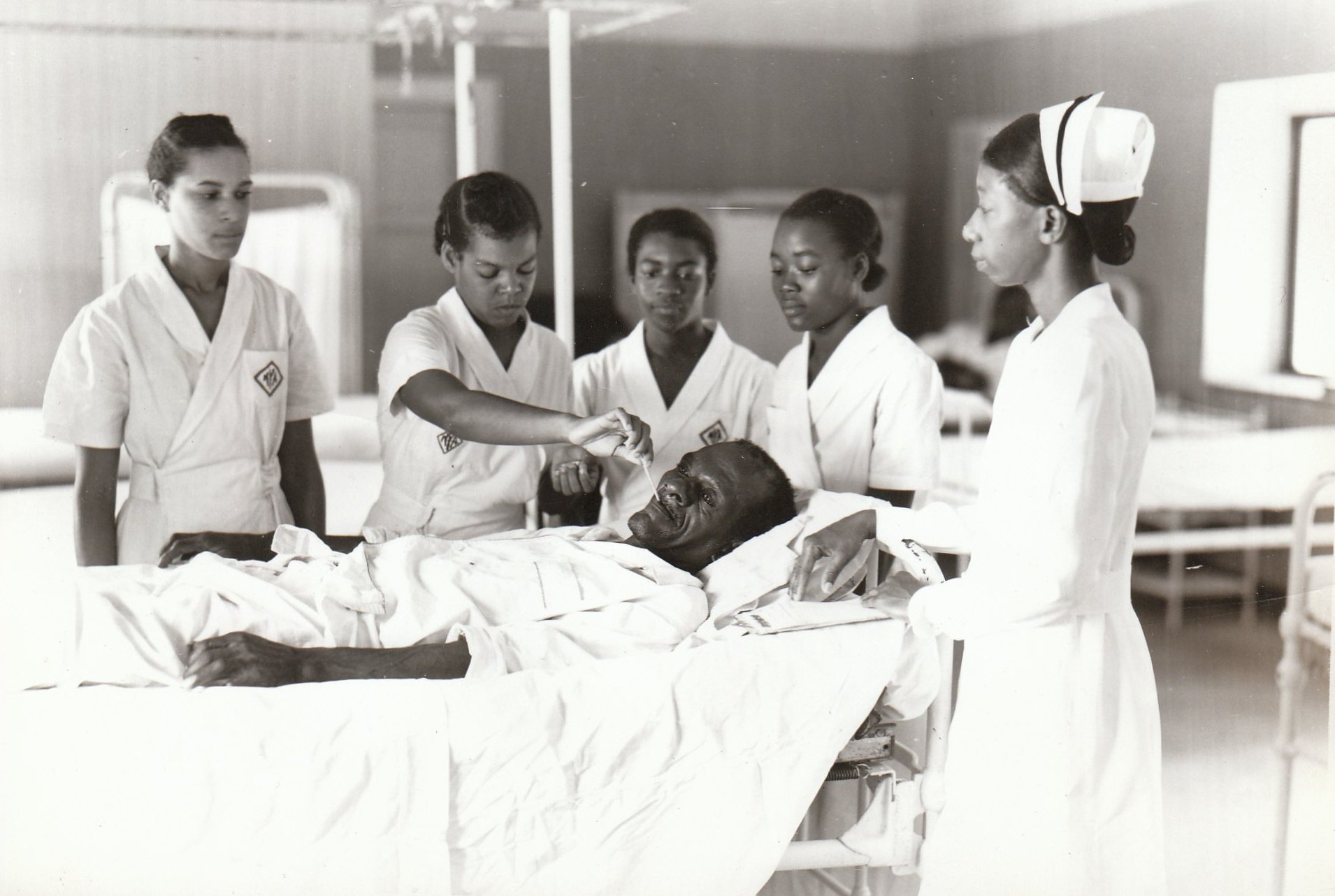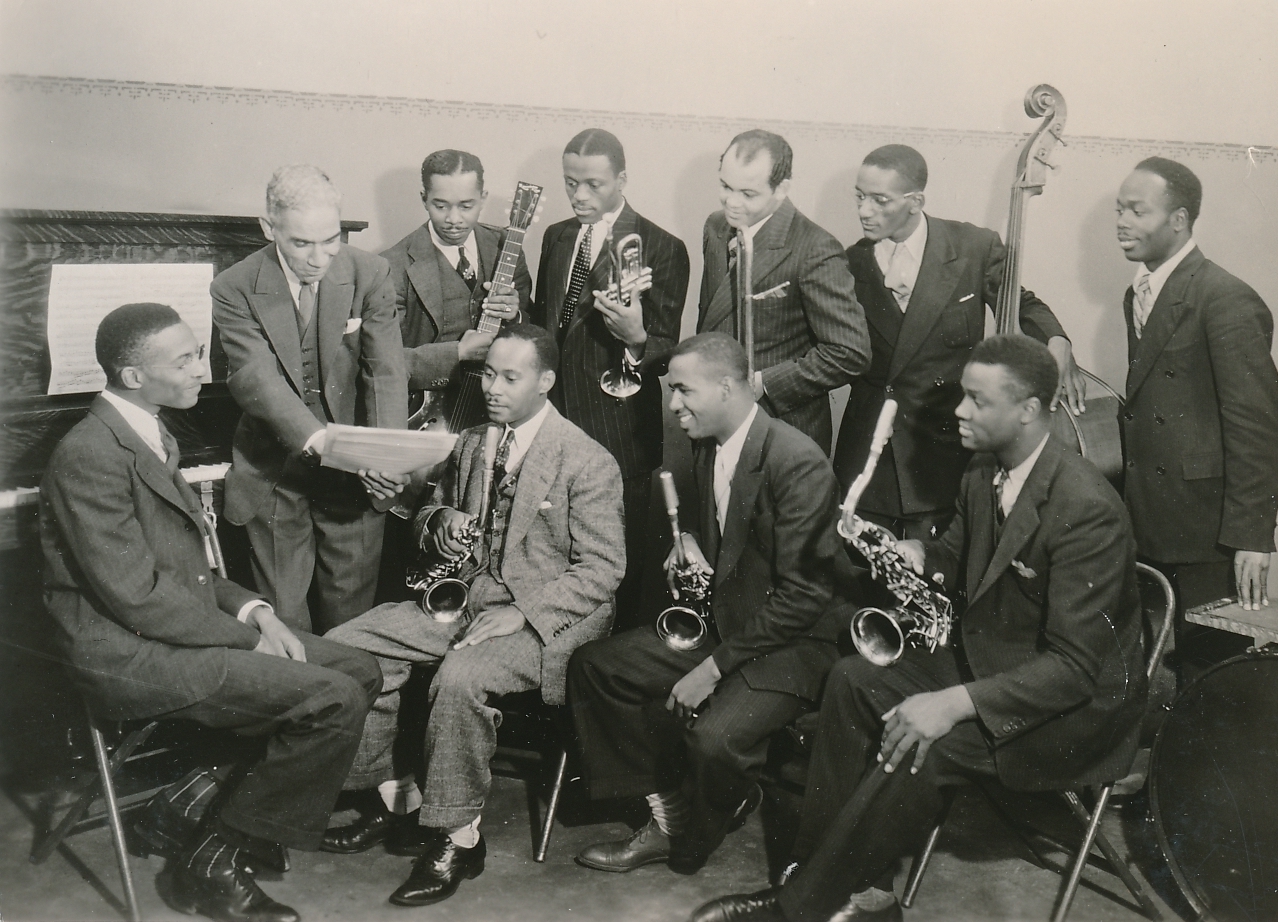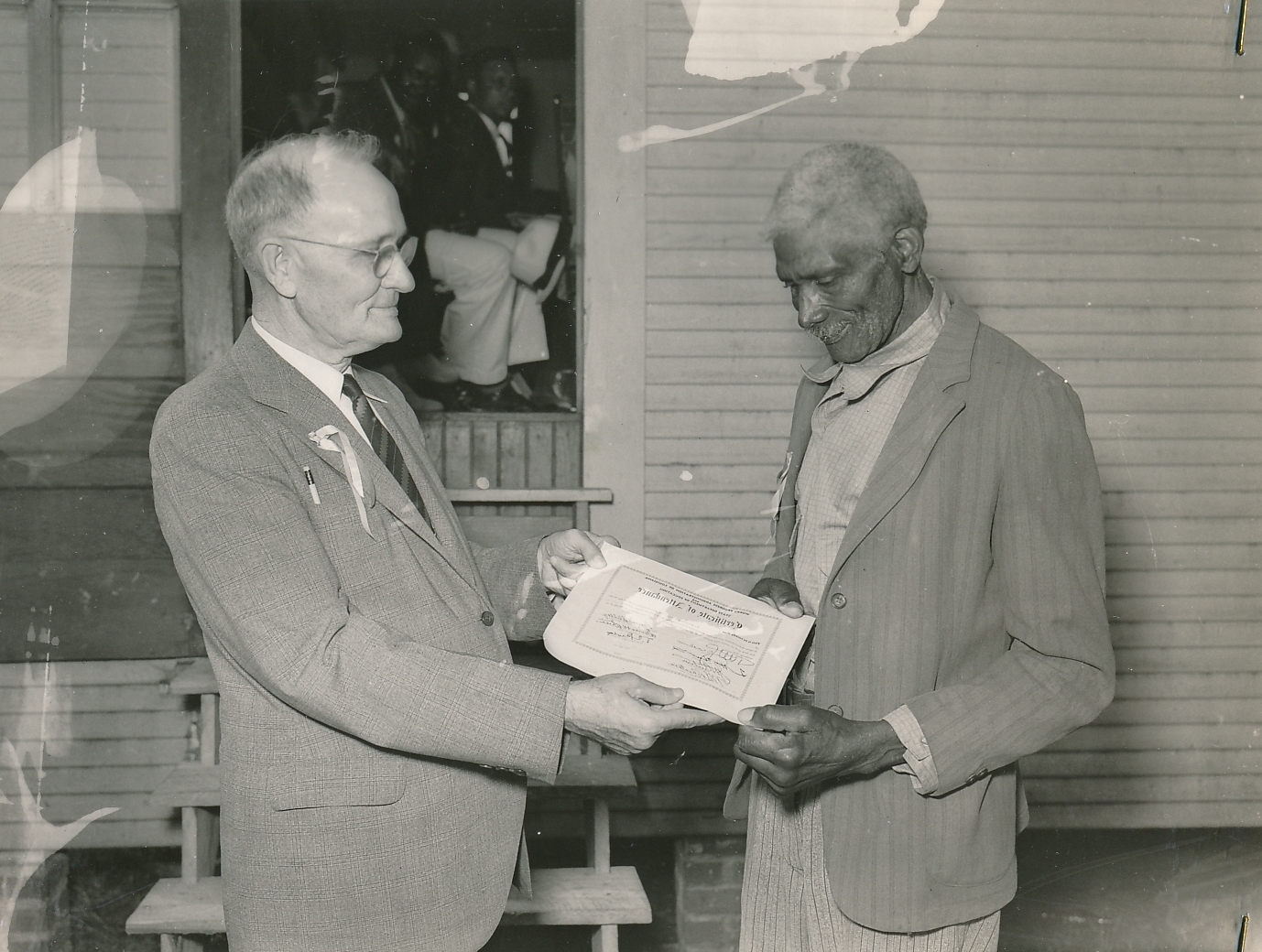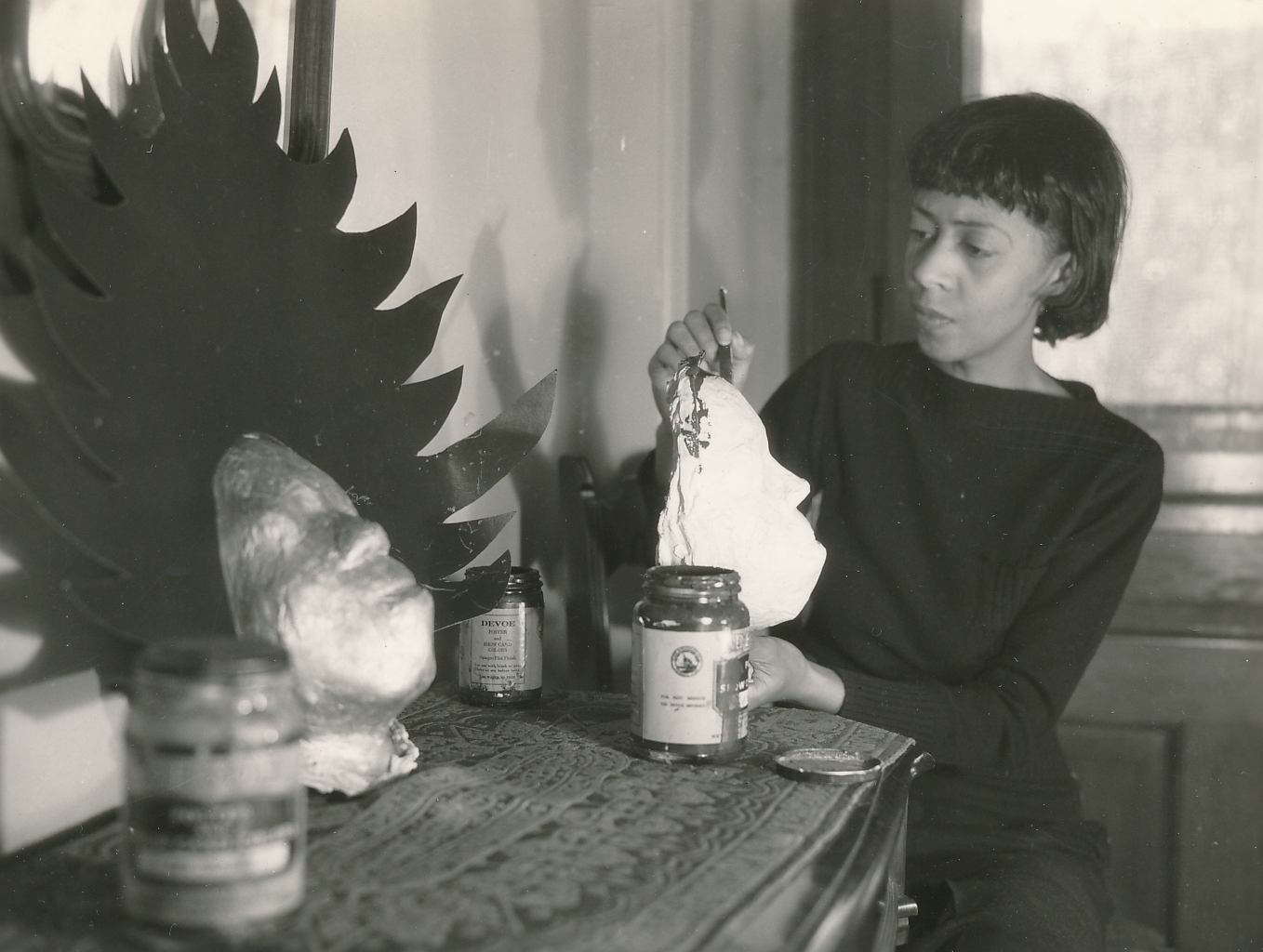- Home
- /
- Racism and Beyond: A...
- /
- A New Deal For...
- /
- African Americans
African Americans
Scroll down for our photo gallery below!
The treatment of people of African origin has been a cloud over the American nation from the beginning [1]. Until the Civil War, black slavery flourished in the South and was a foundation of the national economy [2]. After the war, despite legal emancipation, a new racial order arose in the South based on sharecropping, cheap black labor and Jim Crow [3]. Nor was racial oppression much better in the North, where white supremacy was the prevailing ideology and openly racist proclamations and legislation were commonplace [4].
The Supreme Court’s 1896 Plessy v Ferguson decision rationalizing “separate but equal” was symptomatic of a growing culture of separation and segregation across the United States. “After the ruling, Plessy became the catalyst for many states to separate Blacks and Whites in practically all aspects of life – including transportation, public accommodations, schools, and housing” [5]. In the South, this meant separate bathrooms and drinking fountains; in the North it encouraged the racial segregation of urban neighborhoods [6].
This was the harsh reality the New Deal faced. As one New Deal historian puts it, “For three centuries racism had infected the national mind as well as the body politic… The majority of white Americans wanted no change in race relations. They favored neither desegregation nor equal opportunities for blacks” [7]. An African American historian noted in a recent interview, President Roosevelt “was faced with a rock-solid granite wall of white supremacy within the ranks of his own party and that is a force that is very difficult to overcome” [8].
Given these obstacles, what did the Roosevelt Administration do to advance the cause of racial justice and improve conditions for African Americans? Despite adverse political forces and social attitudes in America, the personnel, policies and programs of the New Deal, while far from perfect, marked an important step forward and had an overall positive effect on the welfare of millions of citizens of African descent.
To begin with, the New Deal featured the most enlightened and anti-racist federal leadership since Reconstruction. Administrators such as Harry Hopkins, Frances Perkins, Harold Ickes, Hallie Flanagan, Aubrey Williams, and Ellen Woodward were deeply committed to the goal of a more egalitarian society [9]. First Lady Eleanor Roosevelt was an outspoken advocate for racial equality and deeply committed to social justice. When she died, Martin Luther King, Jr. said, “The impact of her personality and unwavering devotion to high principle and purpose cannot be contained in a single day or era” [10].
Furthermore, President Roosevelt “appointed an unprecedented number of African Americans to high positions” in the federal government, such as Mary McLeod Bethune, Lawrence Oxley and Robert C. Weaver. Several of these appointees formed an unofficial but important advisory group, the “Black Cabinet” [11]. Many went on to become civil rights leaders in the coming decades [12]. FDR appointed the first African American federal judge, William Hastie [13]. The Supreme Court also began to change under the influence of the New Deal and as FDR added eight new justices, 1937-43. Five of those —William Douglas, Hugo Black, Felix Frankfurter, Stanley Reed and Robert Jackson—would be part of the unanimous decision to desegregate public schools in Brown v. Board of Education (1954).
Modern commentators have rightly criticized the New Deal for the exclusion of farm workers and domestic workers from the Social Security Act and National Labor Relations Act in 1935 – two of the most important pieces of New Deal legislation. There is no question that FDR had to compromise with Southern Democrats, who constituted a major voting bloc in Congress, in order to get New Deal legislation passed. This was particularly true of labor law reform. But the background to Social Security is more complicated. It did not, in fact, face serious opposition from the southern bloc; its exclusions were more due to the influence of the American Farm Bureau, resistance from the Treasury which didn’t want to deal with scattered workforces, and the fact that no European pension system yet included farm or household workers [14]. Farm and domestic workers were brought into the Social Security program in the early 1950s [15].
The record of New Deal work-relief and public works programs was far more positive. Around two million African Americans were hired for projects undertaken by the Civilian Conservation Corps (CCC), Federal Emergency Relief Administration (FERA), Civil Works Administration (CWA), Works Progress Administration (WPA) and National Youth Administration (NYA). Many more were hired by contractors paid by the Public Works Administration (PWA) and Treasury Department, and still others found jobs in the Tennessee Valley Authority (TVA) and the Virgin Islands Company [16].
Relief and public works programs were open to unemployed people of all races, but local officials and contractors, particularly in the South, bent the rules to hire fewer African Americans, exclude them from skilled jobs and pay them less than Whites. This occurred more often in the early stages of the New Deal [17]. By the time the WPA came along in 1935, federal dictates were stronger. Executive Order 7046 (1935) barred discrimination against trained and qualified workers “on any grounds whatsoever,” a policy emphasized by WPA Administrative Order 44 in 1936 [18]. At PWA, Harold Ickes installed a quota system that required contractors to hire a fair share of Blacks; this action became a model for subsequent equal opportunity efforts.
Nor were these programs all segregated, as sometimes claimed [19]. Blacks frequently worked alongside whites, as can be seen in the “Working Together” photo gallery accompanying this essay. The CCC began without overt discrimination, but soon suffered from the actions of white officials in the South. Segregation in the North arose chiefly because of racist reactions from white communities near the camps [20]. In 1935, the national office ordered all companies to be segregated. CCC director Robert Fechner was a southerner from the American Federation of Labor (AFL), which was notoriously unfriendly to blacks; FDR appointed him as CCC director to mollify the AFL over complaints that the corps was undercutting wages.
The WPA was arguably the most popular and important New Deal program of the 1930s, and it was vital for African Americans. By 1939, there were about 425,000 Black relief workers employed by the WPA – one-seventh of the WPA workforce and a higher percentage of African Americans than in the overall U.S. labor force [21]. This included skilled jobs and fair wages; when a complaint was voiced by a white critic that African Americans earned more on WPA jobs than they were offered by private employers, Ellen Woodward, head of the WPA’s Women’s and Professional Projects division, responded, “Government isn’t justified in paying people starvation wages because they only got that much before” [22].
Furthermore, the WPA, PWA and other New Deal public works programs made special efforts to focus on disadvantaged black communities, providing health clinics, hospitals and immunizations; new schools, college buildings, and special courses; and recreation facilities, staff and programs. The Bankhead-Jones Act of 1937 assisted black tenant farmers in purchasing their own land [23].
New Deal public works such as parks and recreation facilities were meant to be open to all Americans, regardless of race. The eleven WPA-built municipal swimming pools in New York City are a famous instance of such integration, in a context where race mixing was previously unheard of [24]. At the same time, Secretary of Interior Ickes desegregated the cafeteria and offices in his department and the practice spread throughout the federal bureaucracy during the 1930s [25]. Overall, the employment of African Americans in federal line agencies tripled [26].
New Deal efforts at fairness did not go unnoticed. The African American newspaper, Opportunity, declared, “It is to the eternal credit of the administrative officers of the WPA that discrimination on various projects because of race has been kept to a minimum and that in almost every community Negroes have been given a chance to participate in the work program… in the northern communities, particularly in the urban centers, the Negro has been afforded his first real opportunity for employment in white-collar occupations” [27]. An African American who grew up during the 1930s recalled: “The WPA and other projects introduced black people to handicrafts and trades. It gave Negroes a chance to have an office to work out of with a typewriter. It made us feel like there was something we could do in the scheme of things” [28]. In his study of the Black CCC experience in California, Olen Cole, Jr. finds that despite discrimination the net result was positive for the many young African Americans in terms of acquiring skills, work discipline, a sense of self-worth, and future economic well-being [29].
A particularly strong part of the New Deal was the way African Americans featured prominently in its cultural programs. Artists such as Charles Davis and Sargent Johnson were hired by the Treasury Department’s Section of Fine Arts and the WPA’s Federal Art Project to create public murals and sculptures for federal buildings [30]. The WPA undertook a major effort to interview former slaves – an extraordinary resource for historians and citizens alike. Alan Lomax and others were paid to travel through the South recording the songs of folk and blues musicians, creating a magnificent repository of African American music. “Negro Theatre Units” were established under the Federal Theater Project. Memorably, Helen Tamiris’s box office hit How Long Brethren?, a federal dance project, “depicted the despair of unemployed Southern blacks and was danced to Lawrence Gellert’s ‘Negro Songs of Protest’ sung by an African American chorus” [31].
No doubt, the power, practices and policies of white America often prevailed over New Dealers’ good intentions. The New Deal would bring a quantum leap in the power of the federal government over states and localities, but it did not eliminate the federal system, the input of local officials nor the power of business over public policy. One of the best examples of this is housing policy. The New Deal created the first serious federal housing programs, which benefitted millions of Americans in the long run; but they were flawed by racial segregation.
Public housing in the 1930s provided a helping hand by moving thousands of African Americans from unsanitary housing into modern units built by the PWA, Farm Security Administration (FSA), Alley Dwelling Authority (ADA) and United States Housing Authority (USHA). Yet, almost all of public housing projects were segregated. This was not by express policy, but because residential segregation was a nearly universal practice in US at the time [32].
Another failure of New Deal policy was in the long-term effects of the Homeowners’ Loan Corporation (HOLC) and Federal Housing Administration (FHA), which saved millions of families from losing their homes in the Depression and underwrote a huge increase in homeownership after the Second World War. Yet, they also lent federal approval to the practice of “redlining” African American and integrated neighborhoods as too risky for mortgage lending. Black applicants were regularly refused FHA loans and were therefore unable to gain home ownership, while white households moved enmasse to segregated suburbs. As black families were left behind in ghettoes with deteriorating rental housing, the relative wealth, security and well-being of the two groups widened dramatically [33].
It should be remembered, however, that residential segregation had been the norm for decades before the New Deal. White people overwhelmingly preferred it that way and protected their neighborhoods through incorporation, deed covenants, zoning, steering, and mob action. The leadership of that effort came from developers, bankers and economists, who developed sophisticated methods of property appraisal that justified racial separation. The National Association of Real Estate Boards (NAREB) played a central role in drafting HOLC and FHA law and regulations to insure that red-lining was written into federal policy [34].
A common criticism of President Roosevelt is the failure to throw his weight behind a federal anti-lynching law, which was a key demand of African American activists and supported by the vast majority of Northern Democrats and key members of his administration. While the number of lynchings had decreased dramatically in the 1930s [35], the horror of lynching made it a critical issue that black and white civil rights activists could rally support around. Yet, FDR chose once again not to butt heads with Southern Democrats, especially when it came before Congress in 1938 and threatened to split the Democratic Party wide open. Besides, southerners in the Senate were determined to kill the legislation through filibuster. This was not FDR’s finest hour, but, to his credit, he made a determined effort to campaign against conservative Democrats in the 1938 elections; unfortunately, he failed to change the growing drift to the right in Congress [36].
It is important to remember that the movement for Civil Rights was in its infancy in the 1930s and only began to flex its muscles late in the decade. The anti-lynching mobilization, some key victories in the Supreme Court and the beneficial effects of New Deal programs all played a role in this development. The march to war beginning in 1940 was also crucial, as civil rights leaders started demanding equal treatment of Blacks in the armed forces and military procurement work. The blatant hypocrisy of US opposition to fascist countries and the continuing American color bar provided a powerful wedge for African American advancement [37].
Once again, FDR was caught in the middle, with the Army and Navy solidly opposed to integration and Southern votes in Congress needed for the military build-up (against widespread Northern isolationism). He tried to split the difference in his June 1941 Executive Order 8802, which banned racial discrimination in the defense industries but did not integrate the military [38]. While it did not go as far as civil rights leaders wanted, it was widely hailed in the Black press as the most important federal act since Emancipation [39].
Roosevelt was not unaware of the racism in America, and his position was evolving along with the country. One should not forget his pathbreaking inaugural address in 1944, which called for a Second Bill of Rights to be shared by all people, “regardless of station, race, or creed” [40].
In one of his last actions, FDR approved the entry of African American women into the WAVES and SPARS, the newly-created female service divisions of the Navy and Coast Guard, either as enlisted recruits or officer candidates. William L. Dawson, the sole African American congressman at the time, said: “Once more the President proves to all America that he is a true champion of the democratic principle of equality of opportunity. Step by step he is cutting through the prejudice and discrimination which has barred the way for Negro advancement.” Civil rights advocate Thomasina Johnson (later, Norford) added: “The decision of the President to admit Negro women to the WAVES and SPARS is a triumph of democracy. President Roosevelt has gallantly prepared the way for further advancement of Negro women” [41].
In sum, the Roosevelt Administration came into office at a time when White Supremacy was in full flower and the Great Depression was the first order of business in saving the country. Yet, despite the odds, the New Deal brought significant gains for African Americans. The author of A New Deal for Blacks concludes that the movement toward Civil Rights was aided substantially by New Deal programs and attitudes [42]. Although the Civil Rights movement lay a generation in the future, the New Deal helped African Americans build a foundation to fight for more equal treatment and greater opportunity [43].
Sources:
(1) This is especially true of the East; the western U.S. always had a different racial order, relating to peoples of Asian, Latin and Native descent.
(2) See, e.g., Gavin Wright, The Political Economy of the Cotton South. New York: Norton, 1978.
(3) See, e.g., Jay Mandle, The Roots of Black Poverty: The Southern Plantation Economy After the Civil War. Durham: Duke University Press, 1978; Gavin Wright, Old South, New South. New York, Basic Books, 1986.
(4) Audrey Smedley, Race in North America: Origin and Evolution of a Worldview, Boulder: Westview Press, 1993; and Theodore Allen, The Invention of the White Race. New York: Verso, 1994.
(5) F. Michael Higginbotham, “An American Tragedy: The enduring legacy of Plessy vs. Ferguson,” Baltimore Afro-American, May 25, 1996.
(6) St. Clair Drake and Horace Cayton, Black Metropolis: A Study of Negro Life in a Northern City, University of Chicago Press, 1993; and George Lipsitz, How Racism Takes Place, Philadelphia: Temple University Press, 2011.
(7) Harvard Sitkoff, A New Deal for Blacks: The Emergence of Civil Rights as a National Issue: The Depression Decade, 30th Anniversary Edition, New York: Oxford University Press, 2009, p. 248.
(8) Gerald Horne, quoted in “Undoing the New Deal: African-Americans, Racism and the FDR/Johnson Reforms (Pt5),” The Real News, December 18, 2017.
(9) See our biographies for these leaders at “New Dealers.”
(10) “Eleanor Roosevelt and Civil Rights,” George Washington University (accessed April 17, 2018).
(11) “The ‘Black Cabinet’,” In Motion: The African-American Migration Experience, Schomburg Center for Research in Black Culture, New York Public Library (accessed April 18, 2018).
(12) For an interesting example, see “Lawrence Oxley (1887-1973),” Living New Deal.
(13) “Hastie, William Henry (1904-1976),” BlackPast.org (accessed April 18, 2018).
(14) The main source for the Southern bloc case is Ira Katznelson, Fear Itself: The New Deal and the Origins of Our Times. New York: Liveright, 2013. This is strongly opposed by Larry DeWitt, “The decision to exclude agricultural and domestic workers from the 1935 Social Security Act.” Social Security Bulletin, 70/4, online version (accessed September 6, 2018). Also see, Frances Perkins, The Roosevelt I Knew, New York: The Viking Press, 1946, pp. 297-298. On the influence of agribusiness on the Agriculture Adjustment Act (AAA) and northern corporate capitalists on Social Security and labor law, see William Domhoff and Michael Webber, Class and Power in the New Deal. Stanford CA: Stanford University Press, 2011.
(15) See our summary, Bankhead-Jones Farm Tenant Act (1937); and also DeWitt, note 14 above.
(16) For some data, see our summaries at “New Deal Programs.” Also see a critique of TVA’s relationship with African Americans in, Nancy L. Grant, TVA and Black Americans: Planning for the Status Quo, Philadelphia: Temple University Press, 1990.
(17) Sitkoff, note 7 above, p. 29; and also Nancy Rose, Put to Work: Relief Programs in the Great Depression, New York: Cornerstone Books, 1994.
(18) Donald S. Howard, The WPA and Federal Relief Policy, New York: Russell Sage Foundation, 1943, p. 287.
(19) For example, in an otherwise excellent book by Michael Hiltzik, The New Deal: A Modern History, Free Press, 2011, the author states: “No CCC camps were integrated” (p. 313). There were integrated camps, even if they were a minority and mostly in the early years of the CCC.
(20) Olen Cole, Jr., The African-American Experience in the Civilian Conservation Corps, Tallahassee: University Press of Florida, 1999.
(21) Federal Works Agency, Final Report on the WPA Program, 1935-43, Washington, DC: U.S. Government Printing Office, 1946, pp. 45, 107.
(22) Martha H. Swain, Ellen S. Woodward: New Deal Advocate for Women, Jackson, MS: University Press of Mississippi, 1995, p. 100.
(23) See our summary, “Bankhead-Jones Farm Tenant Act (1937),” Living New Deal.
(24) Marta Gutman, “Race, place and play: Robert Moses and the WPA swimming pools in New York,” Journal of the Society of Architectural Historians, 2008, vol. 67(4), pp. 532-61.
(25) Sitkoff, note 7 above, p. 50.
(26) Ibid., p. 249.
(27) Quoted in Donald S. Howard, note 18 above, p. 295, citing Opportunity, Vol. 17, No. 2, February 1939, p. 34.
(28) Studs Terkel, Hard Times: An Oral History of the Great Depression, New York: The New Press, 2000, p. 92.
(29) See note 20 above.
(30) See, e.g., our posts: Richmond County Courthouse: Charles Davis Murals – Staten Island, NY and “A New Deal Muralist’s Work Lives On.” See also American Negro Exposition, Official Program and Guide Book, note 25 above.
(31) “Helen Tamiris: American Dancer and Choreographer,” Encyclopedia Britannica (accessed April 18, 2018).
(32) See, e.g., American Negro Exposition, Official Program and Guide Book, 1940, p. 21, 23 (accessed April 18, 2018); Gwen Wright, Building the Dream: A Social History of Housing in America, Cambridge: Harvard University Press, 1981; and Marc Gelfand, A Nation of Cities: The Federal Government and Urban America, 1933-1975, New York: Oxford University Press, 1975.
(33) The best overall analysis of what happened in the postwar era is David Freund, Colored Property: State Policy and White Racial Politics in Suburban America, Chicago: University of Chicago Press, 2007.
(34) Marc Weiss, “The origins and legacy of urban renewal,” IN: J. Paul Mitchell, Ed. Federal Housing Policy and Programs, New Brunswick: Rutgers Center for Urban Policy Research,1985, pp. 253-276; Kevin Gotham, “Racialization and the state: the housing act of 1934 and the creation of the Federal Housing Administration,” Sociological Perspectives, 2000, volume 43(2): pp. 291-317; Jeffrey Hornstein, A Nation of Realtors: A Cultural History of the Twentieth-Century American Middle Class, Durham: Duke University Press, 2005; Amy E. Hillier, “Redlining and the Homeowners’ Loan Corporation,” Journal of Urban History, volume 29(4), 2003, pp. 394-420.
(35) See statistics compiled by Professor Douglas Linder (University of Missouri – Kansas City) at https://law2.umkc.edu/faculty/projects/ftrials/shipp/lynchingyear.html (accessed July 12, 2020).
(36) See generally, Sitkoff, note 7 above.
(37) Ibid.
(38) “Executive Order 8802: Prohibition of Discrimination in the Defense Industry (1941),” National Archives and Records Administration (accessed June 22, 2020).
(39) Sitkoff, note 7 above, p. 242.
(40) “State of the Union Message to Congress, January 11, 1944,” Franklin D. Roosevelt Presidential Library and Museum (accessed June 22, 2020).
(41) “Navy to Recruit Negro WAVES and SPARS,” The New York Age, October 28, 1944, pp. 1 and 11.
(42) Sitkoff, note 7 above.
(43) Thomas Sugrue, Sweet Land of Liberty: The Forgotten Struggle for Civil Rights in the North, New York: Random House, 2008.
